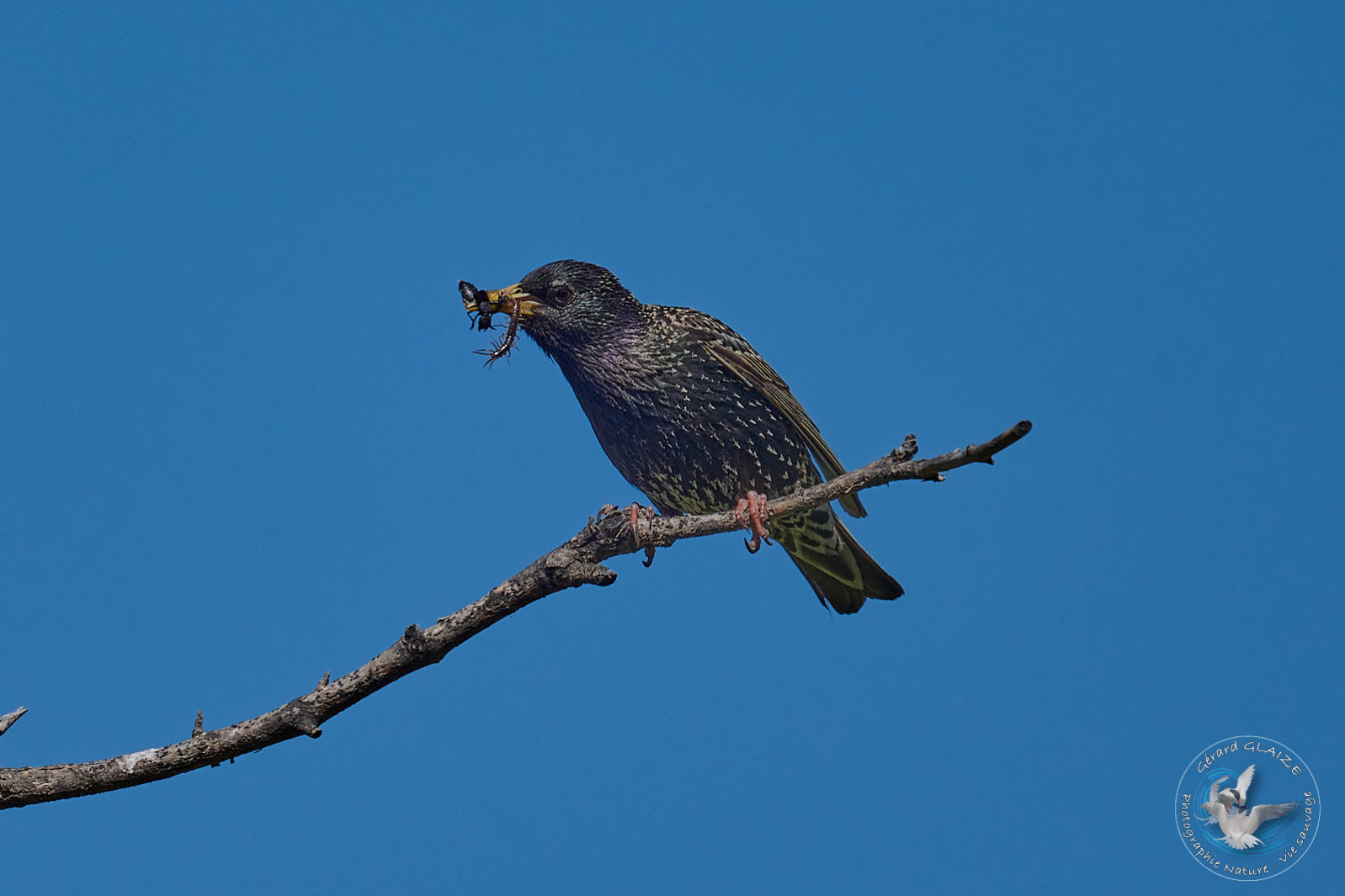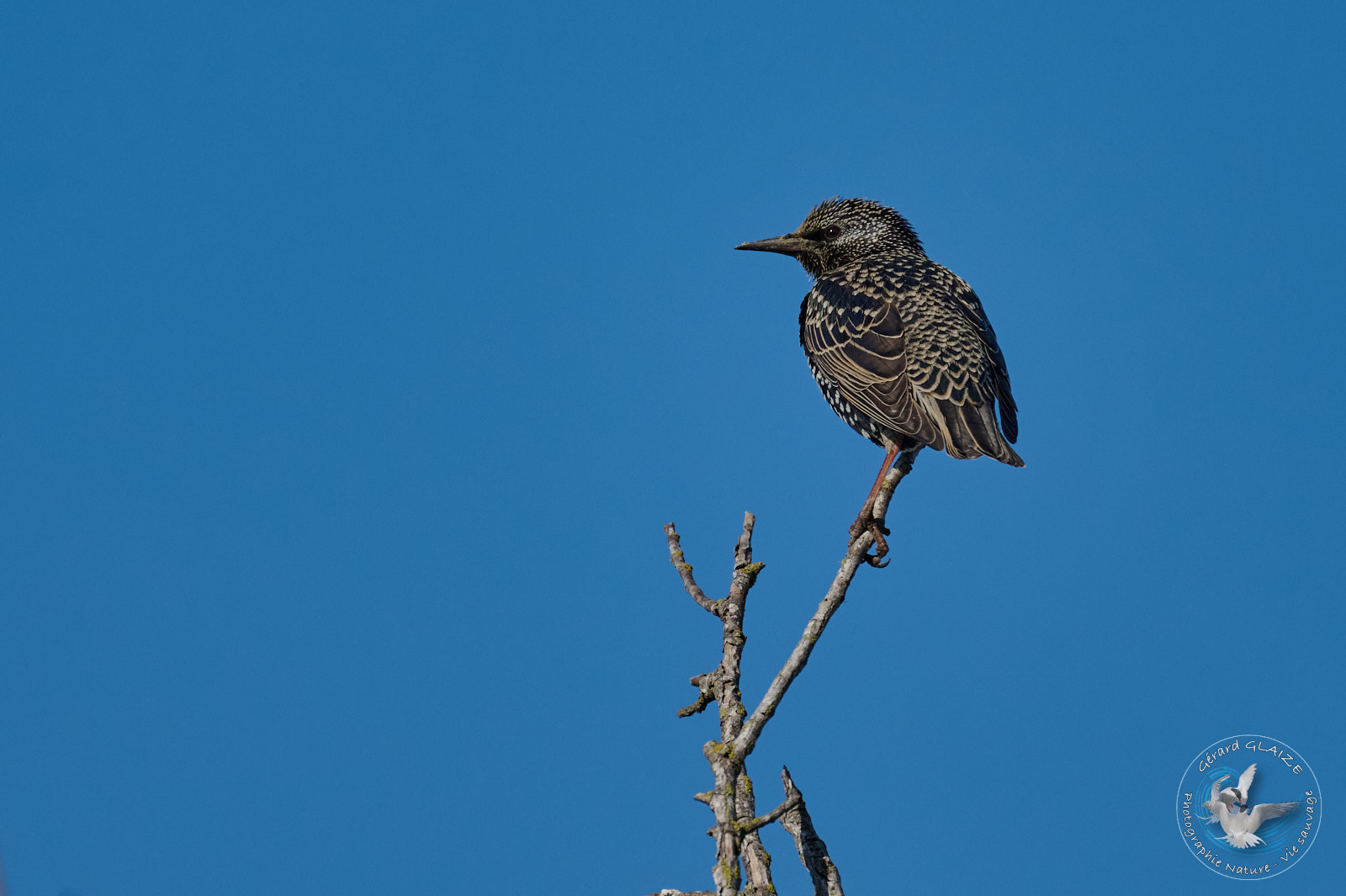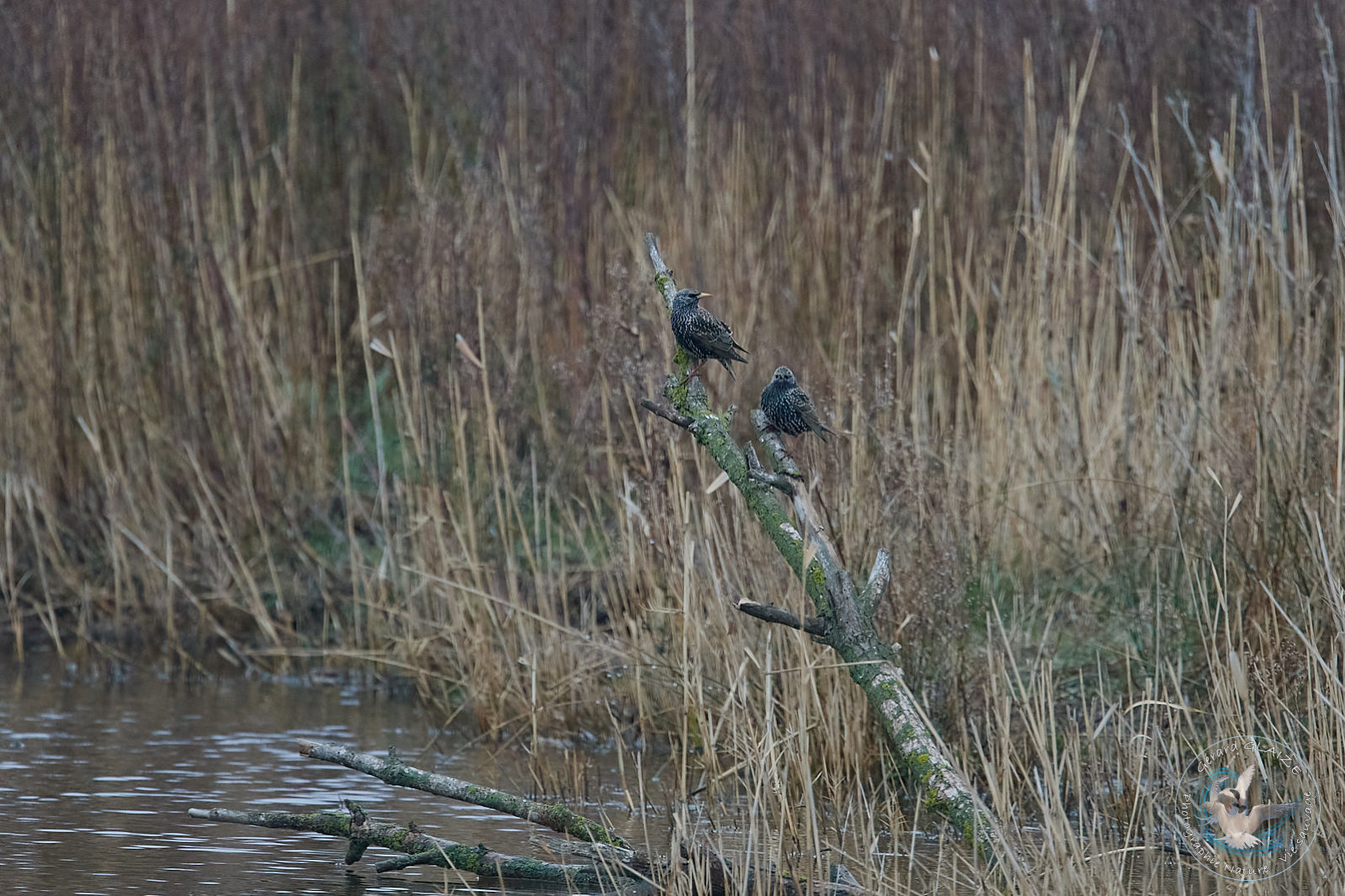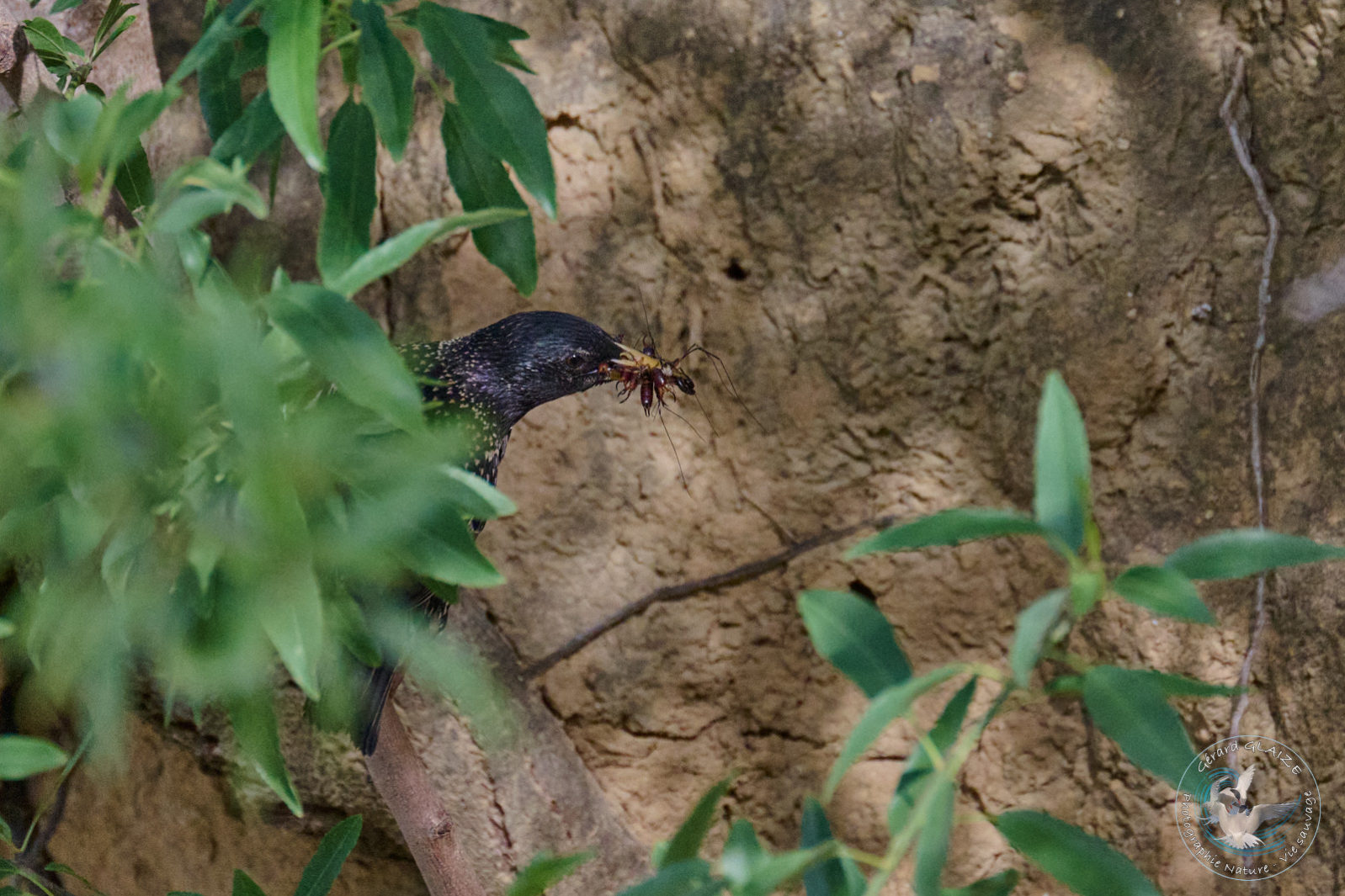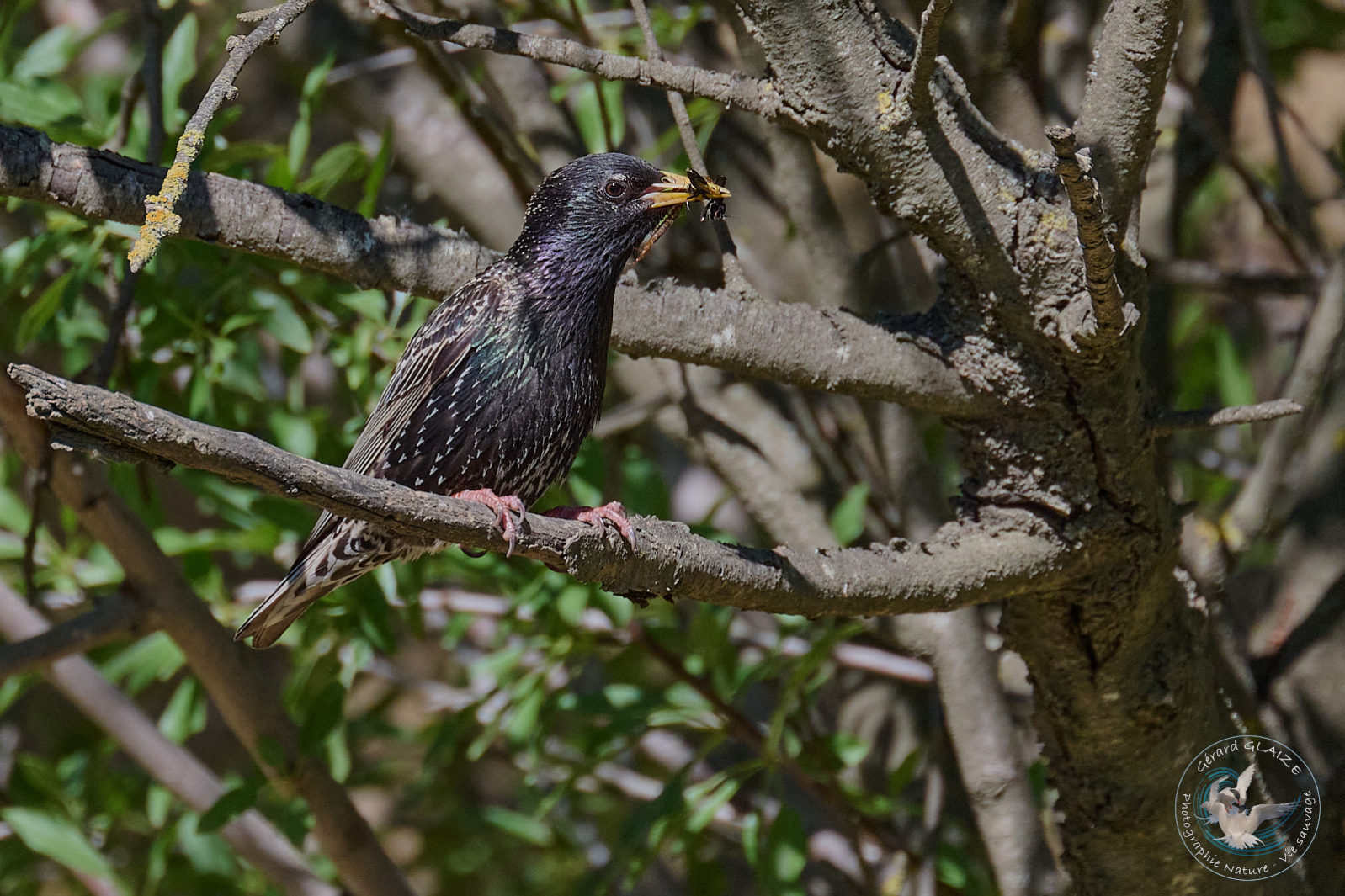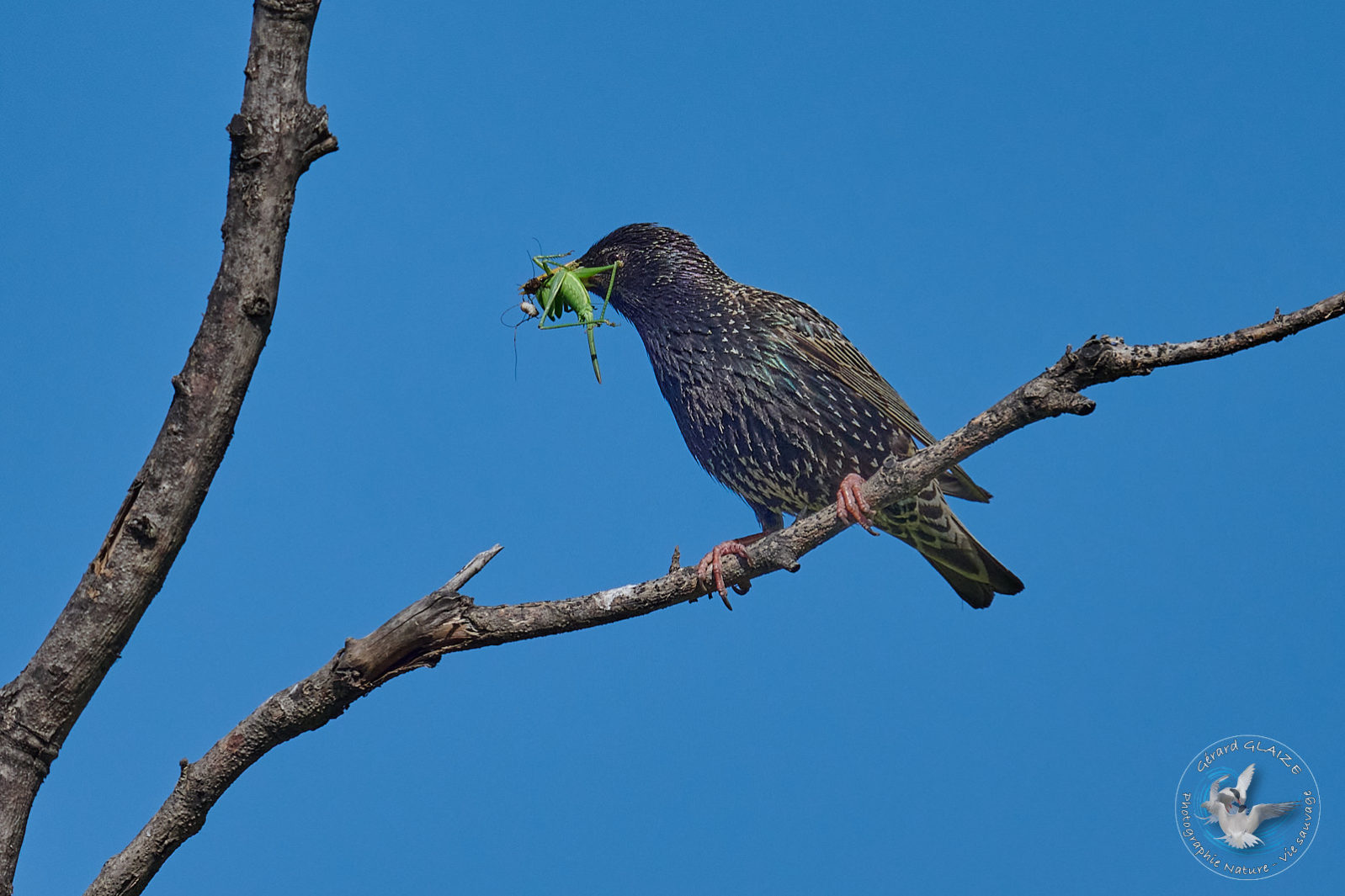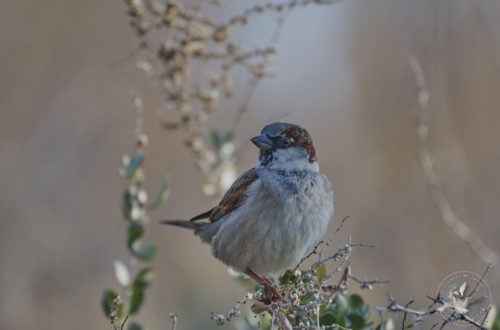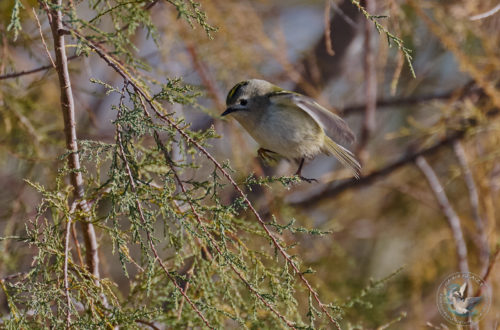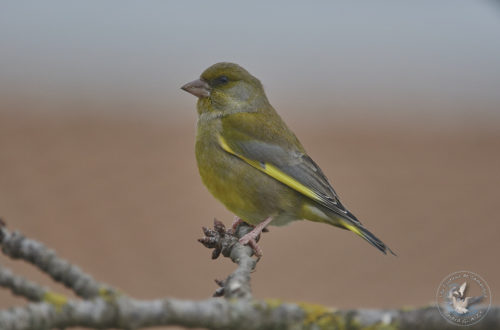Common Starling
Common Starling is a species of passerine bird in the family Sturnidae, and the order Passeriformes. It is native to most of Eurasia, but has been introduced to all continents except Antarctica. The Starling has become one of the most familiar birds in temperate regions. With its plump body, short, triangular and pointed wings, and short, square tail, its silhouette is characteristic.
The plumage of the Common Starling is black and shiny, iridescent with green, purple, pink, blue and bronze reflections, especially during the breeding season. The species exhibits sexual dimorphism: females are duller. They also have a white circle around the iris that males do not have. However, males have longer and darker feathers than females. During the breeding season when the beak is yellow, the base of the males’ beak is silvery blue while the base of the females’ beak is pinkish.
This is a highly social bird species. The main behavioral trait of the Common Starling is its gregarious temperament which leads it to form groups, almost all year round. As such, starlings live most of the year in social groups of varying sizes. These groups can gather up to several million individuals in the wild except during the breeding season when they live in pairs.
Common Starling
Scientific name : Sturnus vulgaris
Family : Sturnidae
Length: 21 cm – Wingspan: from 31 cm to 40 cm
Weight : from 60 gr to 96 gr
IUCN Conservation Status: LC
Flight
Its flight is energetic and direct with rapid wing beats, alternating with short glides. Large groups move as a single unit, with great precision, to avoid flying predators. It can travel up to 1,500 kilometers during its migrations to reach feeding sites. It can reach speeds between 60 and 80 km/h.
Habitat
Thanks to its easily adaptable and generalist behavior, the Common Starling adapts to a large number of different habitats. These habitats, often open, are at the same time a place of rest, a feeding site and a nesting site. It is therefore found both in rural environments and in environments close to Man, that is to say in urban and peri-urban areas.
Regime – Diet
The Common Starling is an omnivorous species, but the insectivorous diet in the broad sense predominates in all seasons. Prey is recruited from all arthropods (insects, myriapods, arachnids), but also earthworms and other small molluscs. An example of ideal prey is the tipulid diptera and their terrestrial larvae. These are omnipresent in meadows, on the surface and at shallow depths. The beak is then an essential tool.
From summer to winter, fruits can take on great importance in their diet. As they feed in groups, this eating habit can very quickly become harmful to viticulture and arboriculture.
Nesting
The Common Starling can be monogamous or polygamous. Females are sexually mature at one year old while males are sexually mature at around two years old. In migratory populations, the male generally arrives first at the breeding site. The Starling is a cave-dwelling species. The male therefore builds the nest in a natural cavity (trunks, cliffs, cracks, etc.) or of human origin (nest boxes, walls, etc.). This is generally located at least three meters high.
The eggs of the Common Starling are pale blue or clear and spotted. The female lays between 2 and 9 eggs, the majority of the incubation is done by the female. It lasts about fifteen days. Both parents provide care to the young, altricial, by feeding them from their hatching to their flight, on average for 15 to 26 days. At this stage, the young remain dependent on their parents for several days to feed themselves.
Population
Internationally, the Common Starling is considered by the International Union for Conservation of Nature (IUCN) to be a species of Least Concern from a conservation perspective, due to its widespread range and large, although declining, overall population size.
Protection
Due to their expansion, population control measures have sometimes been necessary in some areas. Its numbers are becoming rare, but the species is protected in the United Kingdom. However, it is important to remember its importance and usefulness as an insect predator.
Song
The Common Starling is known as a very vocal bird, and this is the case throughout the year. In this bird, the song is expressed in a long phrase, containing whistles alternating with syllables that are as melodious as each other. An exceptional ability of the Starling lies in its ability to imitate the songs and cries of other bird species as well as certain human noises and non-biological noises from its environment.
For example, this bird perfectly imitates the Golden Oriole, but also the Coot or the Buzzard. Sometimes, it emits squeaks, gurgles, chirps or even clicks to punctuate its sentences.


